France, the French and us
1965
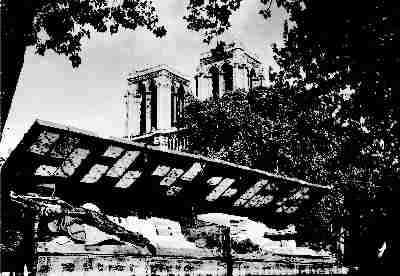
In 1965 I was attending the Alliance Française in Dublin, when they offered a scholarship under the Connaissances de la France programme. This consisted of some days in Paris followed by a week elsewhere in France. The object of the exercise was to present France to foreigners, presumably in the best possible light. This did not mean, however, that there were any restrictions on the visiting students. Quite the contrary - the authorities facilitated us as far as possible.
The group I was in consisted of a number of nationalities. Some came from within the then Common Market; I remember French and Germans, at least. Some came from without; I remember Scandinavians (Finland & Sweden], North Africans [Algeria & Morocco], and Central and Eastern Europeans [Czechoslovakia].
This was in the post Kennedy era. You can see from the photo that the Quai de Passy had been rechristened Avenue du Président Kennedy. But, the "événements" of 1968 were yet to come.
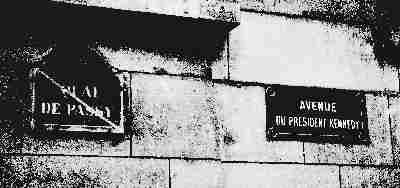
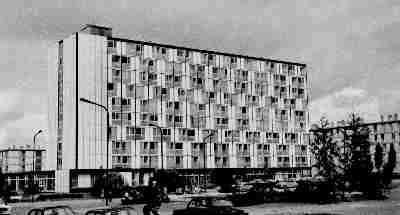
Our stay in the Paris area was in a "Ville Dortoire" [dormitory town] called Sarcelles, which had been newly constructed in conformity with the latest architectural and social fashion of the day. Ballymun, in Dublin, was a parallel development.
Apart from keeping our eyes open, we interviewed local inhabitants and officials and it was clear that this development was conforming to the emerging fashion in more ways than one. Physical accommodation had been constructed but there was a complete lack of social or other amenities and frequent trips to the centre of Paris were not an option for the inhabitants.
We also learned that there was a very high suicide rate among inhabitants of these high rises.
Yet, here was the French Government presenting the project as a showpiece of modernity.
This was clearly a development undertaken to serve the needs of the economy, and that of the Paris region in particular, but either its social implications had not been forseen or there had been a misplaced faith in the incentives for the system to deliver the full project as originally conceived.
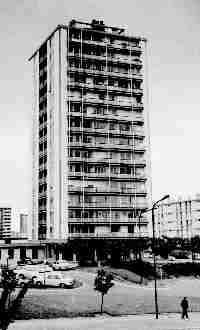
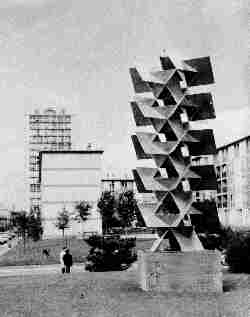
Clearly, the piece of "sculpture" shown in this picture was intended to bring an element of quality into the lives of the inhabitants, but its lines do little to relieve the angularity and drabness of the development as a whole and it is a wholly inadequate substitute for badly needed social amenities.
Grenoble is a nice town, situated in the Isère Valley. We actually stayed in Crolles, a small village further up the valley. It was from here that we visited St Hugues , a really uplifting experience. We also visited a paper mill "Papéterie du Vieux Moulin" which was using the latest chemical processes in paper-making and the monastic distillery in Chartreuse. There was also a visit to a bra factory on the itinerary, but in keeping with my early journalistic leanings, I organised an alternative visit to the regional newspaper, La Dauphiné Liberée, which while perhaps not quite as uplifting was certainly fascinating. The structure of the paper was an object lesson in subsidiarity as the inside pages of the different editions reflected a hierarchy of regional to local variation.
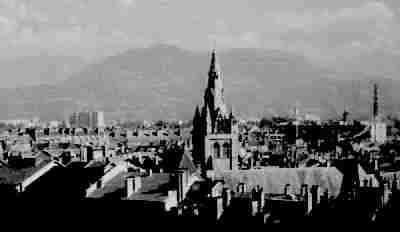

All in all a very educational and satisfying experience. Full marks to the French Government for organising it and to the participants for entering fully into the spirit of the thing. They were a great bunch. Some of them are shown in the picture opposite.
Postscript:
The above was based on my perceptions in 1965. Since posting it, I thought I'd Google Sarcelles and there is no shortage of material on the web. It appears the place did settle down in the late sixties and early seventies, at least up to a point, and was populated by Jews and Arabs, both from North Africa. They seem to have coexisted in relative peace until more recent times. The town is now said to be split in two and violence is endemic.
Plus ça change, plus c'est la même chose.
